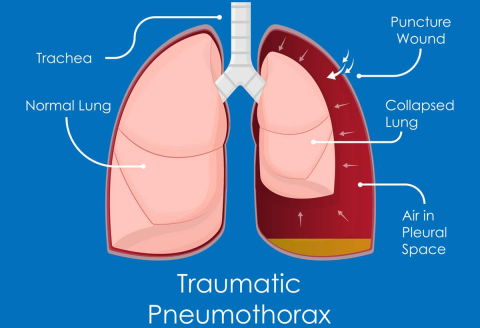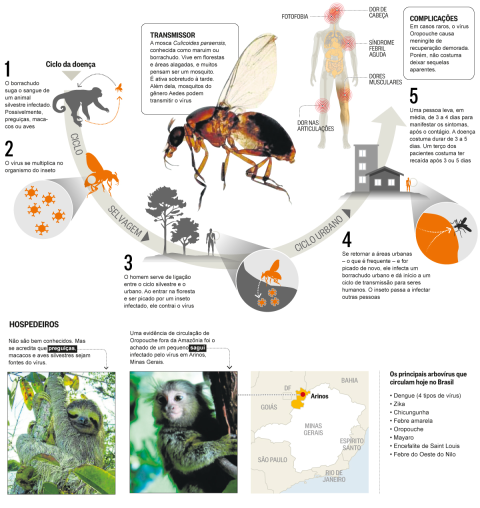Stroke prevention guidelines are essential tools aimed at minimizing the risk of stroke, a serious health crisis that affects over 795,000 individuals annually in the United States alone. These guidelines, outlined by major organizations like the American Heart Association (AHA), prioritize early detection and management of stroke risk factors, including high blood pressure, diabetes, and unhealthy lifestyle choices. By highlighting the importance of recognizing stroke symptoms, such as sudden weakness or confusion, these recommendations serve as a critical reminder for both healthcare providers and the public. Furthermore, awareness of ischemic and hemorrhagic stroke types can enhance understanding and prompt timely medical intervention. Implementing the AHA stroke guidelines can significantly reduce the likelihood of stroke, leading to better long-term health outcomes.
The need for effective strategies to avert cerebrovascular accidents, commonly known as strokes, is more pressing than ever. With a staggering number of Americans facing the harrowing reality of stroke each year, alternative approaches to stroke prevention have gained momentum. Recognizing the various stroke triggers and symptoms is crucial for effective intervention, thus emphasizing the significance of staying informed about the latest stroke prevention protocols. In recent years, healthcare experts have underlined the benefits of integrating lifestyle modifications, routine health monitoring, and educational initiatives to mitigate the impact of strokes. By adopting a comprehensive view of cardiovascular health, individuals can contribute to lowering their risk of both ischemic and hemorrhagic strokes.
Understanding Stroke Symptoms: The First Line of Defense
Recognizing the early signs of a stroke can significantly impact outcomes, making awareness crucial. The mnemonic BEFAST helps individuals identify key stroke symptoms, such as sudden loss of balance, blurred vision, facial drooping, arm weakness, speech difficulties, and the urgency of calling 911. The faster a stroke is identified, the quicker medical attention can be provided, which can drastically influence recovery and reduce long-term disability.
Stroke symptoms often manifest differently in various individuals, and factors such as age, sex, and ethnicity may play a role. Recent findings suggest that younger populations and minority groups may experience unique symptoms or lesser-known risk factors, making it essential for community health initiatives to address these disparities. The American Heart Association’s guidelines emphasize ongoing education in recognizing stroke symptoms across demographics.
Types of Strokes: Ischemic vs. Hemorrhagic
Strokes are primarily classified into two categories: ischemic and hemorrhagic. Ischemic strokes account for approximately 87% of all strokes and occur when a blood clot obstructs blood flow to the brain. This blockage can stem from a variety of causes, including plaque buildup from atherosclerosis. On the other hand, hemorrhagic strokes arise from weakened blood vessels that rupture, causing bleeding in the central nervous system. Both types require immediate medical intervention to minimize damage.
Understanding the differences between ischemic and hemorrhagic strokes is vital for effective treatment strategy development. The American Stroke Association’s updated guidelines provide a framework for healthcare providers to tailor treatments based on stroke type, symptoms, and individual risk factors. Timely response to either type can greatly affect recovery outcomes and reduce the likelihood of severe disabilities post-stroke.
Stroke Prevention Guidelines: A Holistic Approach
The updated stroke prevention guidelines from the American Heart Association stress a holistic approach to reducing stroke risk. This includes maintaining a healthy lifestyle, managing chronic conditions, and being proactive about potential risk factors such as high blood pressure and cholesterol. Key recommendations involve adopting a balanced diet, engaging in regular physical activity, and ensuring proper sleep hygiene.
Incorporating lifestyle changes is essential for long-term stroke prevention. The guidelines advocate for routine check-ups to monitor heart health and catch any risk factors early. These resources are critical for individuals at higher risk, such as those with a history of heart disease or diabetes. By fostering a collaborative relationship between patients and healthcare providers, the guidelines aim to create effective prevention strategies tailored for individual needs.
Highlighting Stroke Risk Factors: Essential Knowledge
Understanding the risk factors for stroke is essential in taking preventive measures. Common risk factors include hypertension, diabetes, obesity, high cholesterol, and smoking. Recognizing these hazards prompts individuals to seek medical advice and make necessary lifestyle changes that can lower their stroke risk significantly.
Recent studies have also highlighted the impact of less obvious factors, such as stress, sleep apnea, and certain hormonal changes, particularly among women. The AHA guidelines suggest that healthcare providers assess and discuss these risk factors as part of routine healthcare, enabling people to adapt their lifestyles accordingly to minimize stroke threats.
The Importance of Timely Stroke Treatment
Time is often referred to as ‘brain’ when it comes to stroke treatment because the sooner a blockage is cleared, the better the potential outcomes. Updated AHA guidelines emphasize the urgent need for quick action, detailing the protocols that emergency responders and healthcare providers should follow to assess and treat stroke victims effectively.
Effective treatment not only involves rapid diagnosis but also the administration of appropriate medications, such as thrombolytics for ischemic strokes. The guidelines advocate for continuous education of both medical personnel and the public on recognizing stroke symptoms and the immediate steps to take for treatment, reinforcing that swift responses can greatly minimize brain damage and promote recovery.
Community Awareness Campaigns: Bridging the Knowledge Gap
Community awareness campaigns are instrumental in bridging the knowledge gap surrounding stroke prevention and treatment. By utilizing local health resources and educational programs, organizations like the AHA strive to inform the public about stroke symptoms, risks, and the importance of immediate medical attention. Raising awareness can lead to faster recognition and response during a stroke crisis, ultimately saving lives.
Additionally, these campaigns focus on marginalized communities often underrepresented in health discussions. By tailoring messages to address specific cultural and linguistic needs, such initiatives can effectively engage audiences that may be unaware of stroke risks or recognize symptoms. The ultimate goal is to foster a proactive attitude toward health and prevention.
Nutritional Guidelines for Stroke Prevention
Nutrition plays a pivotal role in stroke prevention, with dietary choices significantly influencing overall cardiovascular health. The AHA’s updated guidelines highlight the importance of a heart-healthy diet rich in fruits, vegetables, whole grains, lean proteins, and healthy fats. These nutrients can help lower blood pressure and cholesterol levels, crucial factors in mitigating stroke risk.
Furthermore, awareness of specific dietary patterns such as the Mediterranean or DASH diets can empower individuals to make informed decisions about their food choices. Ongoing education about meal planning and preparation can aid communities in adopting healthier habits that promote brain health and overall well-being.
The Role of Exercise in Stroke Prevention
Regular physical activity is another cornerstone of stroke prevention. The 2024 AHA guidelines recommend at least 150 minutes of moderate aerobic exercise weekly, alongside strength training on two or more days. Engaging in physical activity helps maintain a healthy weight, keeps blood pressure and cholesterol levels in check, and improves overall heart function—each vital in reducing stroke risks.
Encouraging communities to participate in exercise programs can significantly impact stroke prevention efforts. Creating accessible environments for physical activity—such as parks and recreational facilities—can lead to higher participation rates, ultimately resulting in healthier populations less susceptible to strokes.
Mental Health and Stroke Risk: An Overlooked Connection
Emerging research increasingly demonstrates a connection between mental health and stroke risk. Conditions such as depression and anxiety can lead to behaviors that elevate stroke risk, including poor diet and lack of exercise. The AHA emphasizes the importance of addressing mental health as part of a comprehensive approach to stroke prevention.
Healthcare providers are encouraged to screen for mental health issues and refer patients to appropriate resources as needed. By treating mental health holistically alongside physical health, better outcomes can be achieved and the overall risk for stroke may be significantly reduced.
Frequently Asked Questions
What are the most recent stroke prevention guidelines recommended by the AHA?
The American Heart Association (AHA) updated their stroke prevention guidelines on October 21, 2024, emphasizing key lifestyle factors for preventing strokes. These include maintaining a healthy diet, engaging in regular physical activity, managing weight, ensuring adequate sleep, abstaining from tobacco, and keeping cholesterol, glucose, and blood pressure levels in check. These guidelines serve to reduce the risk factors associated with both ischemic and hemorrhagic strokes.
How can recognizing stroke symptoms help in stroke prevention?
Recognizing stroke symptoms is crucial for prevention and timely treatment. The AHA stroke guidelines promote the use of the BEFAST mnemonic: Balance (loss of balance), Eyes (blurred vision), Face (drooping face), Arm (weakness in one arm), Speech (slurred speech), and Time (call 911 immediately). Early recognition and treatment can significantly reduce the risk of long-term disability following a stroke.
What stroke risk factors should I be aware of according to the latest stroke prevention guidelines?
The latest stroke prevention guidelines highlight several risk factors for stroke, including hypertension, diabetes, high cholesterol, smoking, atrial fibrillation, and a sedentary lifestyle. In addition, attention is drawn to special populations, such as pregnant individuals and women experiencing menopause, who may face different stroke risks. Identifying and managing these risk factors is essential for effective stroke prevention.
How do stroke prevention guidelines address the management of anticoagulants?
The updated stroke prevention guidelines provide clear recommendations for the use of anticoagulants and antiplatelet medications in individuals at high risk for ischemic strokes. These guidelines stress the importance of proper management and monitoring by healthcare providers to ensure that patients receive the necessary treatment while minimizing the risks of bleeding or other complications.
What lifestyle changes are recommended to follow stroke prevention guidelines?
The AHA’s stroke prevention guidelines recommend several lifestyle changes to reduce the risk of strokes. These include adopting a heart-healthy diet rich in fruits, vegetables, and whole grains, engaging in regular physical exercise, maintaining a healthy weight, ensuring proper sleep, managing stress, and avoiding tobacco products. These changes help mitigate various stroke risk factors, ultimately promoting cardiovascular health.
How often should stroke risk assessments be conducted according to stroke prevention guidelines?
According to the stroke prevention guidelines, regular risk assessments should be part of routine healthcare check-ups, particularly for individuals with known risk factors. Primary care physicians play a crucial role in monitoring patients’ health and adapting care strategies to manage and mitigate stroke risk effectively over time.
Why is public awareness of stroke symptoms important in relation to AHA stroke guidelines?
Public awareness of stroke symptoms is vital as quick recognition can lead to prompt medical intervention, significantly improving outcomes and reducing long-term disability. The AHA stroke guidelines emphasize community education on symptoms such as those outlined in the BEFAST acronym, highlighting that timely action is essential—”time is of the essence” when it comes to treating strokes.
What advancements in stroke treatment were discussed during the recent international stroke conference?
At the recent International Stroke Conference, advancements in stroke treatment, prevention strategies, and rehabilitation techniques were showcased. Key highlights included new technologies and treatment methodologies that improve outcomes for stroke patients. The conference, attended by over 4,500 participants, reinforced the importance of adhering to the latest AHA stroke guidelines for optimal patient care and outcomes.
| Key Point | Details |
|---|---|
| Statistics | Every year, over 795,000 people in the U.S. experience a stroke, leading to significant long-term disabilities. |
| Types of Strokes | Ischemic strokes (87%) occur due to blood clots, while hemorrhagic strokes occur from burst blood vessels. |
| Public Awareness | The importance of recognizing stroke symptoms (mnemonic BEFAST) and prompt medical attention is emphasized. |
| Updated Guidelines | New recommendations were released by the American Stroke Association and American Heart Association for stroke prevention. |
| Prevention Strategies | Emphasizes a healthy lifestyle (diet, exercise, weight, sleep) along with monitoring and managing risk factors. |
| Role of Primary Care | Primary care providers are crucial in identifying and managing stroke risks before they lead to events. |
| Social Determinants of Health | Highlights how systemic issues like racism and food insecurity impact cardiovascular health. |
Summary
Stroke prevention guidelines are vital in reducing the incidence and impact of strokes, which affect more than 795,000 people annually in the United States. Recent updates by major health organizations underscore the need for public awareness about stroke symptoms, prevention strategies, and the role of healthcare providers in managing stroke risk. By promoting healthy lifestyles and immediate medical response, we can improve outcomes and reduce the burden of strokes on individuals and society.
The content provided on this blog (e.g., symptom descriptions, health tips, or general advice) is for informational purposes only and is not a substitute for professional medical advice, diagnosis, or treatment. Always seek the guidance of your physician or other qualified healthcare provider with any questions you may have regarding a medical condition. Never disregard professional medical advice or delay seeking it because of something you have read on this website. If you believe you may have a medical emergency, call your doctor or emergency services immediately. Reliance on any information provided by this blog is solely at your own risk.







